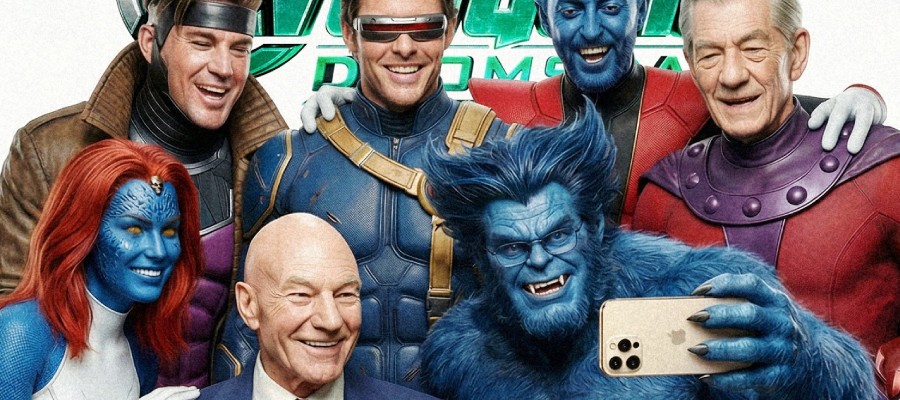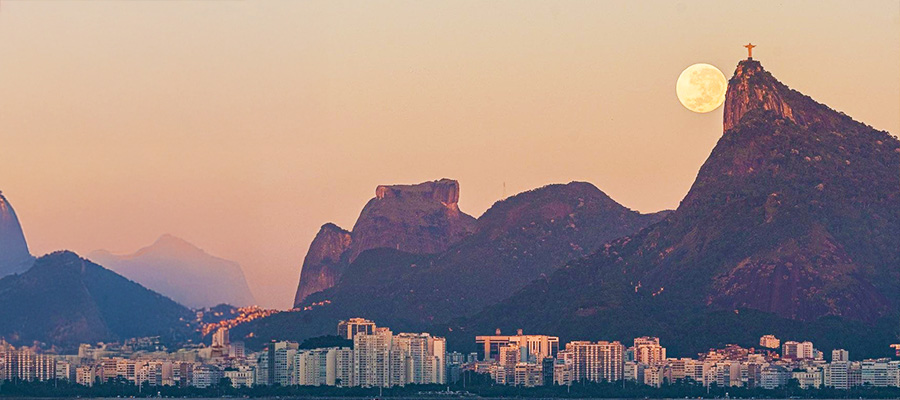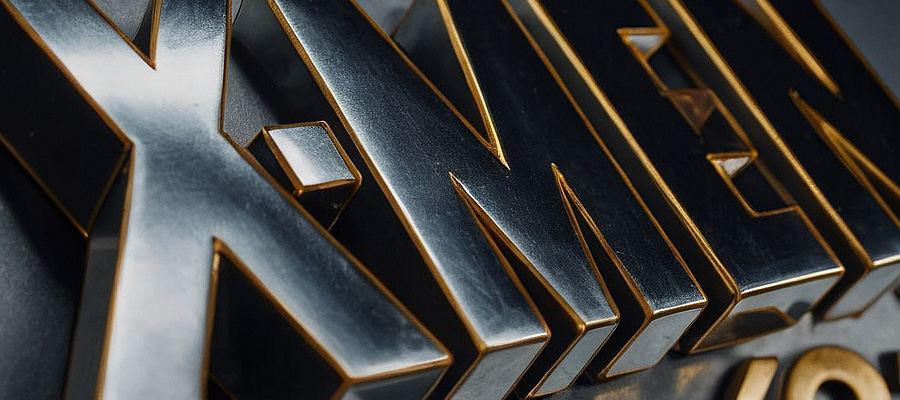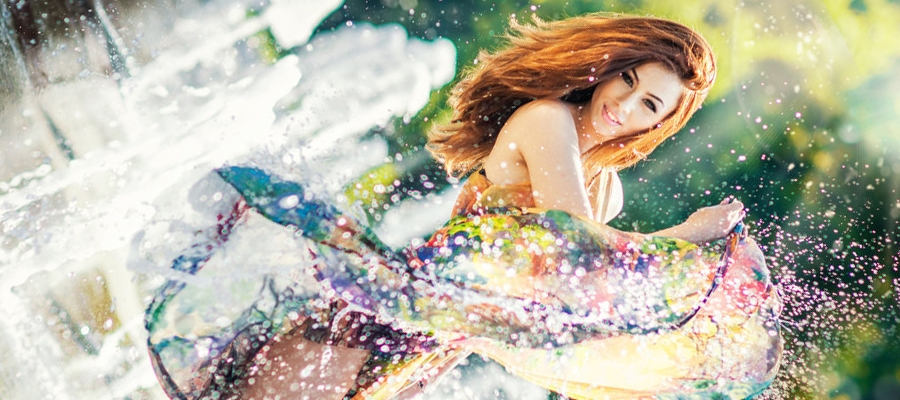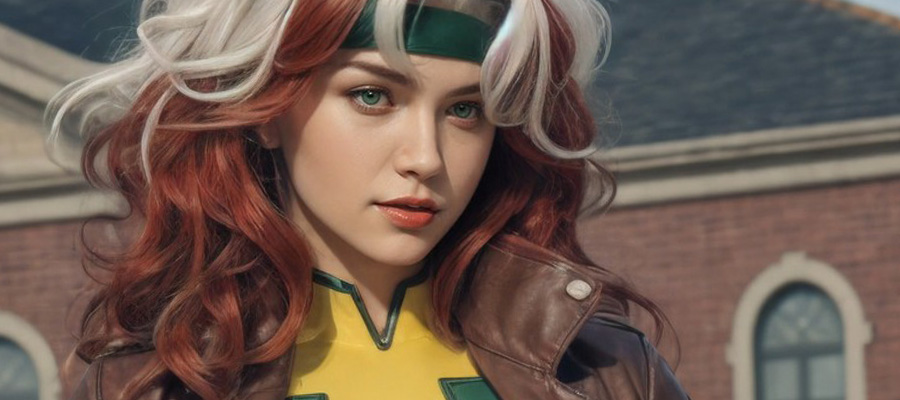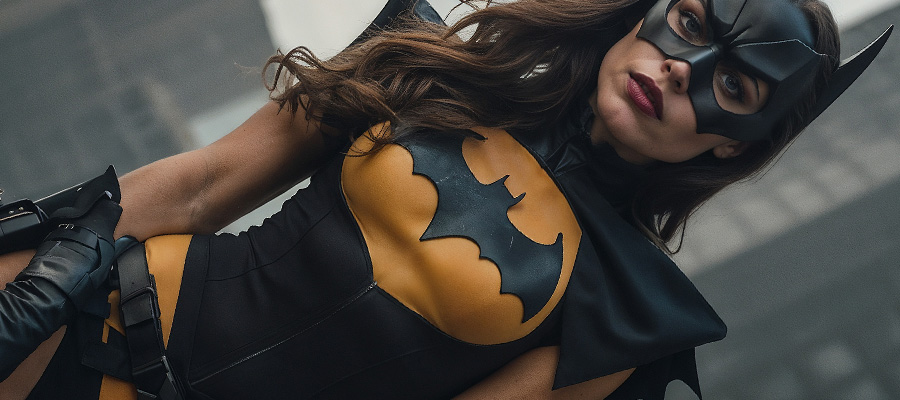You will love this photo shoot as it combines attractive models with the awesome emblems of powerful childhood icons. The subjects in Ian Reyes' "Heroines" series are dressed to impress as female superheroes. An awesome collection by the Puerto Rico based Art Director Ian Reyes (Iancarlo Reyes) featuring models wearing superhero t-shirts, giving them an air of seduction and sensuality.
In this collection, you will not find the typical corsets and tights that classic comic characters wear. The photographer opts for soft cotton tees with lacy undergarments peeking through; he portrays women superheroes in a flattering, modern aesthetic. You will find characters from the Marvel universe and from the DC Comics universe, sporting different emblems such as Captain America, Iron Man, Batman, and The Hulk among many others.
Choose your favorite Superhero!











While the photography above highlights a modern, stylized look, the world of comics has undergone a remarkable transformation in recent years. Female superhero names are taking center stage like never before. Women superheroes such as Wonder Woman, Black Widow (aka Natasha Romanoff), and Captain Marvel have become household names, inspiring audiences and reshaping the landscape of narratives. This shift impacts not only the comic book industry but also popular culture as a whole, reflecting changing societal attitudes towards gender representation.

As girl superheroes gain more prominence, they bring fresh perspectives and diverse storytelling to the genre. From Ms. Marvel to She-Hulk, these superhero female characters challenge traditional tropes and offer new role models for readers of all ages. The rise of Marvel female characters has also led to increased representation behind the scenes, with more Marvel women writers, artists, and creators shaping the stories of these iconic heroines. This article explores the evolution of iconic heroines, their growing influence, and the ways they're changing the face of modern comics.

The Evolution of Women Superheroes in Comics
The representation of female characters in comics has undergone a significant transformation over the decades. In the early days of the medium, women were often relegated to supporting roles, such as love interests or damsels in distress. However, the rise of the feminist movement in the 1960s and 1970s saw a greater representation of strong female super heroes like Wonder Woman and Storm.

Early female characters
One of the first female comic book artists was Lily Renée Wilhelm, who worked on comics during the 1940s Golden Age. Despite the limited representation, female characters and creators made a significant impact on the industry. Ann Newton Kellogg wrote scripts for DC Comics, and characters like Wonder Woman and Miss Fury emerged as early examples of superhero women.

Breaking stereotypes
The 1980s saw the emergence of alternative and independent comics, providing a platform for women to tell their own stories and challenge dominant male narratives. Characters like Jean Grey, Lois Lane, and Storm broke stereotypes and became symbols of female empowerment.
Diversity in representation
In recent years, there has been a push for greater diversity in female representation. Characters like Ms. Marvel, featuring a Muslim-American teenager, and America Chavez, an LGBTQ Latina superhero, have broadened the scope of representation. The success of female superhero movies like Wonder Woman and Captain Marvel has also demonstrated the growing demand for diverse female characters.
Despite the progress made, the representation of women in comics still has room for improvement. As the industry continues to evolve, it is crucial to celebrate the contributions of female creators and characters while striving for even greater diversity and inclusivity. For a comprehensive list of female superheroes, look no further than the ever-expanding rosters of Marvel and DC Comics.

Breaking the Glass Ceiling: Female Superheroes Take Center Stage
In recent years, Marvel girls and other powerful heroines have been shattering the glass ceiling and taking center stage in the world of comics and films. This shift in representation has been a long time coming, with milestone moments paving the way for greater diversity and inclusivity in the superhero genre.

One such milestone was the release of the Wonder Woman film in 2017, which marked the first time a female superhero led a major superhero movie. The film's success, both critically and commercially, proved that audiences were eager to see strong, complex MCU women in leading roles, including fan-favorites like the Scarlet Witch and Black Widow. Another significant moment came with the release of Captain Marvel in 2019, the first woman-led superhero film in the Marvel Cinematic Universe.
These films not only broke box office records but also challenged traditional superhero narratives that had long been dominated by male characters. They showed that Avengers characters female could be just as powerful, compelling, and relatable as their male counterparts.
The rise of female Marvel heroes has also been driven by shifting narratives in the comic book industry. In recent years, there has been a push for greater diversity and representation in comics, with more women writers, artists, and creators shaping the stories of iconic heroines. This has led to the emergence of new, groundbreaking characters like Ms. Marvel, a Muslim-American teenager, and America Chavez, an LGBTQ Latina superhero.

Fan demand for representation has played a crucial role in this shift. As the audience for superhero media has expanded, there has been a growing call for more diverse and inclusive characters. Fans want to see themselves reflected in the stories they consume, and the success of female-led films and comics has shown that there is a significant market for these narratives.
The impact of this increased representation cannot be overstated. For young girls and women, seeing strong, complex female characters on screen and in comics can be incredibly empowering. It sends the message that they, too, can be heroes and that their stories matter. From superhero names girl like Wonder Woman to top female Marvel characters like Natasha Romanoff (Black Widow), these heroines inspire generations.
As the superhero genre continues to evolve, it is clear that female Avengers and other girl superheroes will play an increasingly important role. With more diverse creators behind the scenes and a growing demand for representation from fans, the future of superhero narratives looks brighter and more inclusive than ever before.
The Role of Female Creators in Shaping Superhero Narratives
The increasing presence of female creators in the comic book industry has played a crucial role in reshaping superhero narratives and challenging traditional gender roles. From writers and artists to editors and executives, women are making their mark and bringing fresh perspectives to the genre.

Writers like Lauren Beukes and Amanda Conner have broken into the industry through perseverance and talent. Beukes caught the attention of "Fables" creator Bill Willingham at WonderCon in 2009, leading to her writing a miniseries set in the "Fables" universe. Conner, on the other hand, used "a little bit of craftiness, and a lot of perseverance" to get her foot in the door, calling editors and requesting portfolio reviews.
Female artists are also bringing characters to life in new ways. Shreya Arora, a 21-year-old graphic designer from India, challenges sexist drawings of women in comic books by parodying them using male heroes in poses typically associated with women. Her artwork draws inspiration from comic book covers but flips the narrative, highlighting the misogynistic portrayal of female characters.

Behind the scenes, editors and executives like Diane Nelson, DC Entertainment topper and president & chief content officer of Warner Bros. Interactive Entertainment, are driving change. Nelson takes pride in providing a creative platform for female writers and artists, stating that "DC is home to some of the most powerful female superheroes in the world".
Despite progress, gender bias still exists within the industry and among readers. Some authors have experienced discrimination in the form of being overlooked or having their work considered less universal or serious. However, as the industry grows and becomes more inclusive, perceptions are changing, and comics are now focusing on young female readers as a serious market.

Initiatives like "DC SuperHero Girls," a collaboration between DC, WB Consumer Products, Mattel, and other brand partners, aim to harness the power and prominence of female superhero characters like Echo, Nebula, Supergirl, Gwen Stacy, Valkyrie, Scarlet Witch, Jessica Jones, Gamora, Batwoman, Mystique, Peggy Carter, Hela, Kate Bishop, Monica Rambeau, Yelena Belova, Mary Jane Watson, Agatha Harkness, Kahhori, Okoye, Queen Ramonda, and Xu Xialing. As more diverse creators tell powerful stories with great characters, the comic book industry is poised to thrive and inspire readers of all genders.
